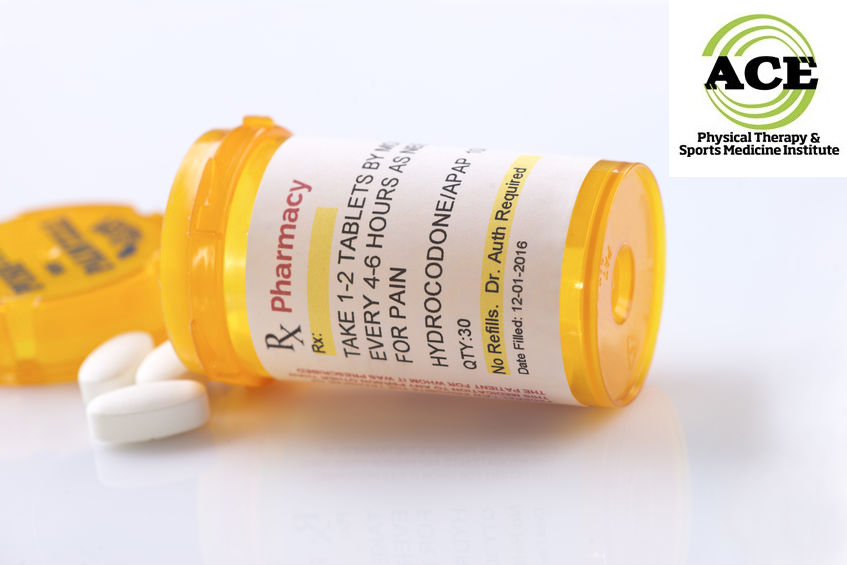USING ICE ON INJURIES NOT OPOIDS

Tid Bits of Info
- Ice can be applied 24/7 if there is a barrier between the ice and the skin.
- Ice is part of the RICE treatment principle, Rest, Ice, Compression, Elevation.
- Ice has a great analgesic effect.
- If ice is on “bare” skin for too long, it can cause an “ice burn” and a blister will develop.
- Seek the advice and treatment of a Physical Therapist if you are in pain.
Using ice on injuries has been a standard protocol for decades, but recently articles have challenged this longstanding practice. Some writers have cited recent studies claiming that the use of ice has never been proven scientifically to be effective, suggesting in some instances it may even impede the healing process. Studies supporting the use of ice far surpass these recent studies that make other claims. In fact, these studies were demonstrated to be of poor quality or performed mainly on the animal population. The use of ice will continue because the historic empirical results are hard to deny.
Using ice on injuries also help to reduce pain and possibly secondary injury due to the inflammatory process. If for no other reason the analgesic effect of ice has to be utilized to reduce the need for opioid drugs. The opioid crisis alone should encourage all healthcare professionals to promote the use of ice in the acute/sub-acute setting
When an injury occurs, the human body transitions through several phases as the healing process occurs. The phase are: inflammation, repair and remodel. The inflammatory phase is usually the most painful. The agents that are present at the injury site to cause the inflammatory response irritate the small nerve fibers in the area causing them to send the pain signal to the brain. Pain is a great inhibitor to muscle contraction and motion. If someone has a great deal of pain in a certain body part, the ability to move and “use” that body part is greatly reduced. The inability to use a body part efficiently can lead to secondary injury at the site.
Ice has been proven to reduce tissue temperature, blood flow and this might “dampen” the negative effects of inflammation. The ice can cause a reduction in waste product that is produced when the metabolic rate of the injured tissue elevates in the acute phase. Surprisingly, the studies that claim ice is harmful to the healing process use the same logic that the reduced circulation might actually cause a “build-up” in metabolic waste.
Studies supporting the use of ice have never been able to state that the results showed that ice reduced the amount of swelling that occurs following an acute injury. The studies do indicate that the function of the injured body part returns to “normal” more quickly with the use of ice. This is most likely due to the fact that ice has a great analgesic effect on the injured body part. If the injured body part is “moved” the blood flow to that area is enhanced. The increase in blood flow theoretically should enhance healing by reducing metabolic bi-product and increasing the amount of medication and healing agents in the injured area.
Ice baths following an intense workout have not been proven to speed up the recovery process. The use of ice following an intense workout is not the same as following an injury or acute trauma. The body “heals” differently when the damage occurs from exercise and ice might impede this process. The use of ice in an acute state is probably most effective in the first 48 hours but the relevance of its use to reduce pain is significant at any time in the recovery process.

The healthcare providers of the world have gone overboard with the urgency to reduce and resolve pain. In most instances, the use of opioid drugs is protocol of choice. Pain is natural and in some instances it is a warning sign of “things” to come. If healthcare providers want to reduce the intensity of someone’s pain level, they should begin with ice, active rest (gentle motion) and Physical Therapy. There are a host of treatment protocols that are used in Physical Therapy aimed at reducing pain levels. Ultimately, the goal of Physical Therapy is to increase someone’s functional level and that might mean learning how to cope with a certain amount of pain.
Ice can reduce pain in almost everyone at any time of their rehabilitation process. Use it for its analgesic effect and don’t get too worried about the slight possibility that it will slow down the healing process. If that occurs, it will be minimal and the reduction in pain levels will far outweigh any negative effect it might have.
























